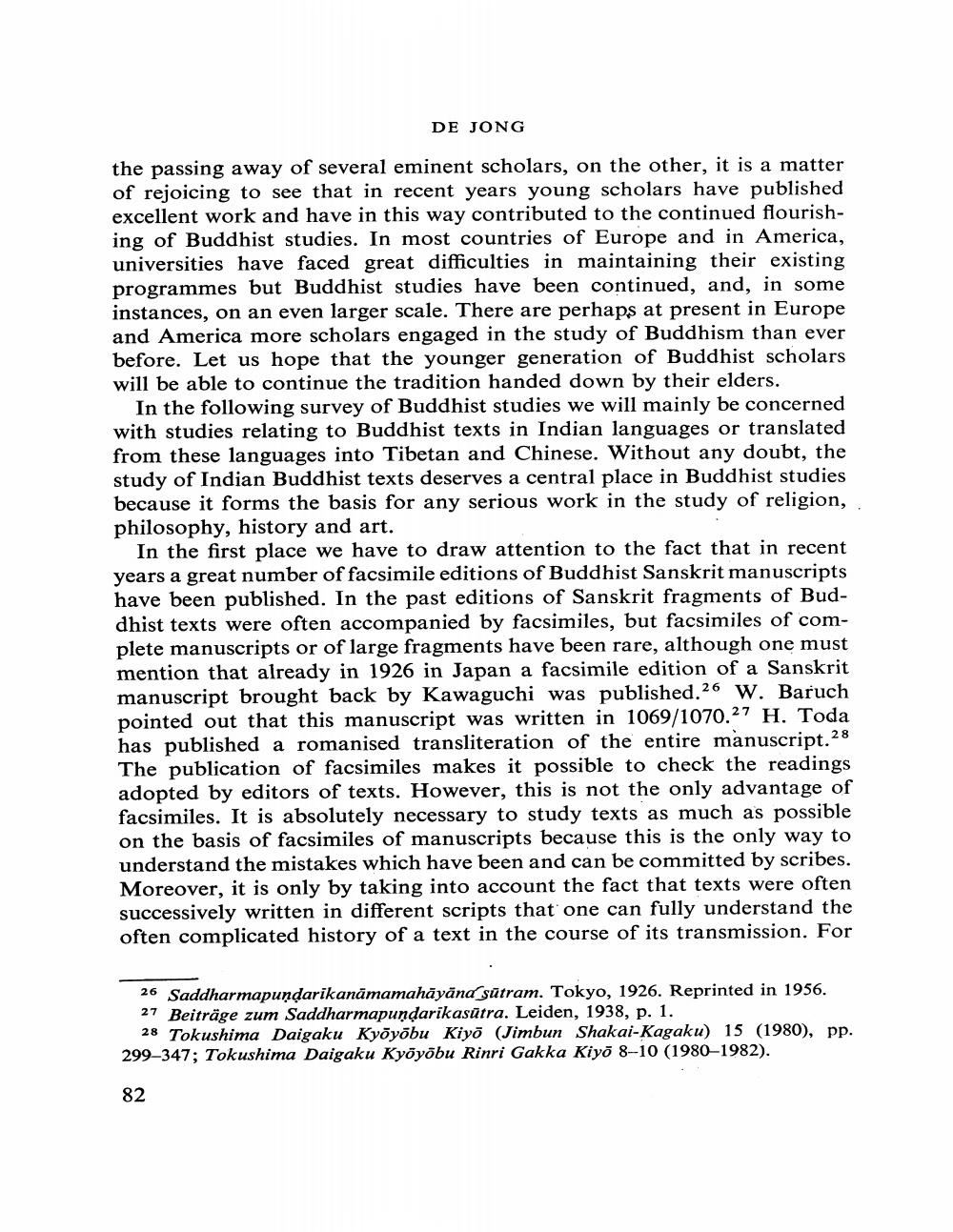Book Title: Recent Buddhist Studies In Europe And America Author(s): J W De Jong Publisher: J W De Jong View full book textPage 4
________________ DE JONG the passing away of several eminent scholars, on the other, it is a matter of rejoicing to see that in recent years young scholars have published excellent work and have in this way contributed to the continued flourishing of Buddhist studies. In most countries of Europe and in America, universities have faced great difficulties in maintaining their existing programmes but Buddhist studies have been continued, and, in some instances, on an even larger scale. There are perhaps at present in Europe and America more scholars engaged in the study of Buddhism than ever before. Let us hope that the younger generation of Buddhist scholars will be able to continue the tradition handed down by their elders. In the following survey of Buddhist studies we will mainly be concerned with studies relating to Buddhist texts in Indian languages or translated from these languages into Tibetan and Chinese. Without any doubt, the study of Indian Buddhist texts deserves a central place in Buddhist studies because it forms the basis for any serious work in the study of religion, philosophy, history and art. In the first place we have to draw attention to the fact that in recent years a great number of facsimile editions of Buddhist Sanskrit manuscripts have been published. In the past editions of Sanskrit fragments of Buddhist texts were often accompanied by facsimiles, but facsimiles of complete manuscripts or of large fragments have been rare, although one must mention that already in 1926 in Japan a facsimile edition of a Sanskrit manuscript brought back by Kawaguchi was published.26 W. Baruch pointed out that this manuscript was written in 1069/1070.27 H. Toda has published a romanised transliteration of the entire manuscript.28 The publication of facsimiles makes it possible to check the readings adopted by editors of texts. However, this is not the only advantage of facsimiles. It is absolutely necessary to study texts as much as possible on the basis of facsimiles of manuscripts because this is the only way to understand the mistakes which have been and can be committed by scribes. Moreover, it is only by taking into account the fact that texts were often successively written in different scripts that one can fully understand the often complicated history of a text in the course of its transmission. For 26 Saddharmapundarikanāmamahāyāna sūtram. Tokyo, 1926. Reprinted in 1956. 27 Beiträge zum Saddharmapundarikasūtra. Leiden, 1938, p. 1. 28 Tokushima Daigaku Kyoyõbu Kiyo (Jimbun Shakai-Kagaku) 15 (1980), pp. 299–347; Tokushima Daigaku Kyoyõbu Rinri Gakka Kiyo 8-10 (1980–1982). 82Page Navigation
1 2 3 4 5 6 7 8 9 10 11 12 13 14 15 16 17 18 19 20 21 22 23 24 25 26 27 28
